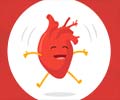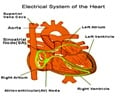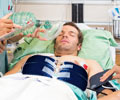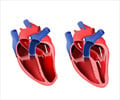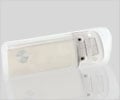Zhonghua Xin Xue Guan Bing Za Zhi
[Treatment strategies of patients with transthyretin amyloidosis cardiomyopathy].
Tian Z, Zhang SY
Read More
Source: PubMed
Cardiology 2020 Jan 31
Impact of Septal Myectomy Volume on Mitral-Valve Replacement Rate in Hypertrophic Cardiomyopathy Patients.
Polanco AR, D'Angelo A, Shea N, Yu SN, Chiang YP, Shimada Y, Weiner SD, Takayama H
Mitral regurgitation (MR) induced by systolic anterior motion in patients with hypertrophic cardiomyopathy (HCM) can frequently be abolished with a pr ...
Read More
Source: PubMed
J. Alzheimers Dis. 2020 Jan 30
Altered Transcriptional Profile of Mitochondrial DNA-Encoded OXPHOS Subunits, Mitochondria Quality Control Genes, and Intracellular ATP Levels in Blood Samples of Patients with Parkinson's Disease.
Gezen-Ak D, Alaylioglu M, Genç G, Sengül B, Keskin E, Sordu P, Güleç ZEK, Apaydin H, Bayram-Gürel Ç, Ulutin T, Yilmazer S, Ertan S, Dursun E
Mitochondrial dysfunctions are significant contributors to neurodegeneration. One result or a cause of mitochondrial dysfunction might be the disrupti ...
Read More
Source: PubMed
Can J Cardiol 2019 Sep 27
Increased Left Ventricular Trabeculation Is Associated With Increased B-Type Natriuretic Peptide Levels and Impaired Outcomes in Nonischemic Cardiomyopathy.
Kawamura T, Yasuda M, Okune M, Kakehi K, Kagioka Y, Nakamura T, Miyazaki S, Iwanaga Y
The clinical significance of left ventricular (LV) trabeculation remains unknown in cardiomyopathies. B-Type natriuretic peptide (BNP) strongly reflec ...
Read More
Source: PubMed
Biochem. Biophys. Res. Commun. 2020 Jan 29
Stabilizing cardiac ryanodine receptor prevents the development of cardiac dysfunction and lethal arrhythmia in Ca2+/calmodulin-dependent protein kinase IIdc transgenic mice.
Sufu-Shimizu Y, Okuda S, Kato T, Nishimura S, Uchinoumi H, Oda T, Kobayashi S, Yamamoto T, Yano M
Ca2+/calmodulin-dependent protein kinase II (CaMKII) has been shown to induce aberrant Ca2+ release from the cardiac ryanodine receptor (RyR2) in vari ...
Read More
Source: PubMed

